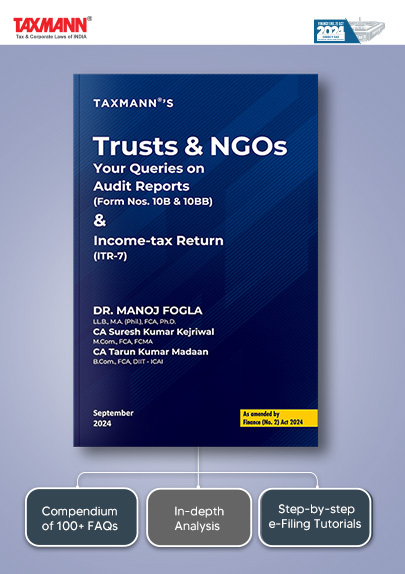[Opinion] Which Ruling Should Be Applied If Two Non-Jurisdictional Courts Make Conflicting Decisions?
- Blog|News|Income Tax|
- 2 Min Read
- By Taxmann
- |
- Last Updated on 30 August, 2024
Mukesh Kohli – [2024] 165 taxmann.com 784 (Article)
We professional many times faces a question whether ruling favourable to Assessee should be applied if there are conflicting decisions by two non-jurisdictional Courts.
Now a days, we professional have been handling an issue whether JAO has authority to issues notice u/s 148 and there are various ruling from Hon’ble Bombay High court, Hon’ble Punjab & Haryana High court, Hon’ble Gauhati High court, Hon’ble Telangana High court and Hon’ble Calcutta High court but there is no judgment from Delhi High Court.
The Hon’ble Calcutta High Court has given judgment against the assessee and in favour of Revenue.
Suppose the Assessee is in Delhi and he Challenges the notice issued u/s 148 by JAO.
If we see there is no ruling yet from Jurisdictional High court i.e. Hon’ble Delhi High court but there are many ruling from various non jurisdictional Hon’ble High courts which are in favour of the Assessee. Now a question arises Whether the decision of non-Jurisdictional High court, beneficial to the Assessee is to be applied and adopted and the decision of Non-jurisdictional High court i.e. Hon’ble Calcutta High Court against the Assessee is not be applied and adopted.
Analysis
The duty of the Court is to read the section, understand its language and give effect to the same. If the language is plain, the fact that the consequence of giving effect to it may lead to some absurd result is not a factor to be taken into account in interpreting a provision. It is for the legislature to step in and remove the absurdity. On the other hand, if two reasonable constructions of a taxing provision are possible, that construction which favours the assessee must be adopted. This is a well-accepted rule of construction recognised by Courts in several of its decisions.
The Hon’ble Apex court in the case of CIT v. Vegetable Products Ltd. [1973] 88 ITR 192 held as under: –
The duty of the Court is to read the section, understand its language and give effect to the same. If the language is plain, the fact that the consequence of giving effect to it may lead to some absurd result is not a factor to be taken into account in interpreting a provision. It is for the legislature to step in and remove the absurdity. On the other hand, if two reasonable constructions of a taxing provision are possible, that construction which favours the assessee must be adopted. This is a well-accepted rule of construction recognised by this Court in several of its decisions. Hence, all that the court has to see is, what is the true effect of the language employed in section 271(1)(a)( i). If court finds that language to be ambiguous or capable of more meanings than one, then the court has to adopt that interpretation which favours the assessee, more particularly so because the provision relates to imposition of penalty.
Click Here To Read The Full Article
Disclaimer: The content/information published on the website is only for general information of the user and shall not be construed as legal advice. While the Taxmann has exercised reasonable efforts to ensure the veracity of information/content published, Taxmann shall be under no liability in any manner whatsoever for incorrect information, if any.

Taxmann Publications has a dedicated in-house Research & Editorial Team. This team consists of a team of Chartered Accountants, Company Secretaries, and Lawyers. This team works under the guidance and supervision of editor-in-chief Mr Rakesh Bhargava.
The Research and Editorial Team is responsible for developing reliable and accurate content for the readers. The team follows the six-sigma approach to achieve the benchmark of zero error in its publications and research platforms. The team ensures that the following publication guidelines are thoroughly followed while developing the content:
- The statutory material is obtained only from the authorized and reliable sources
- All the latest developments in the judicial and legislative fields are covered
- Prepare the analytical write-ups on current, controversial, and important issues to help the readers to understand the concept and its implications
- Every content published by Taxmann is complete, accurate and lucid
- All evidence-based statements are supported with proper reference to Section, Circular No., Notification No. or citations
- The golden rules of grammar, style and consistency are thoroughly followed
- Font and size that’s easy to read and remain consistent across all imprint and digital publications are applied





 CA | CS | CMA
CA | CS | CMA


